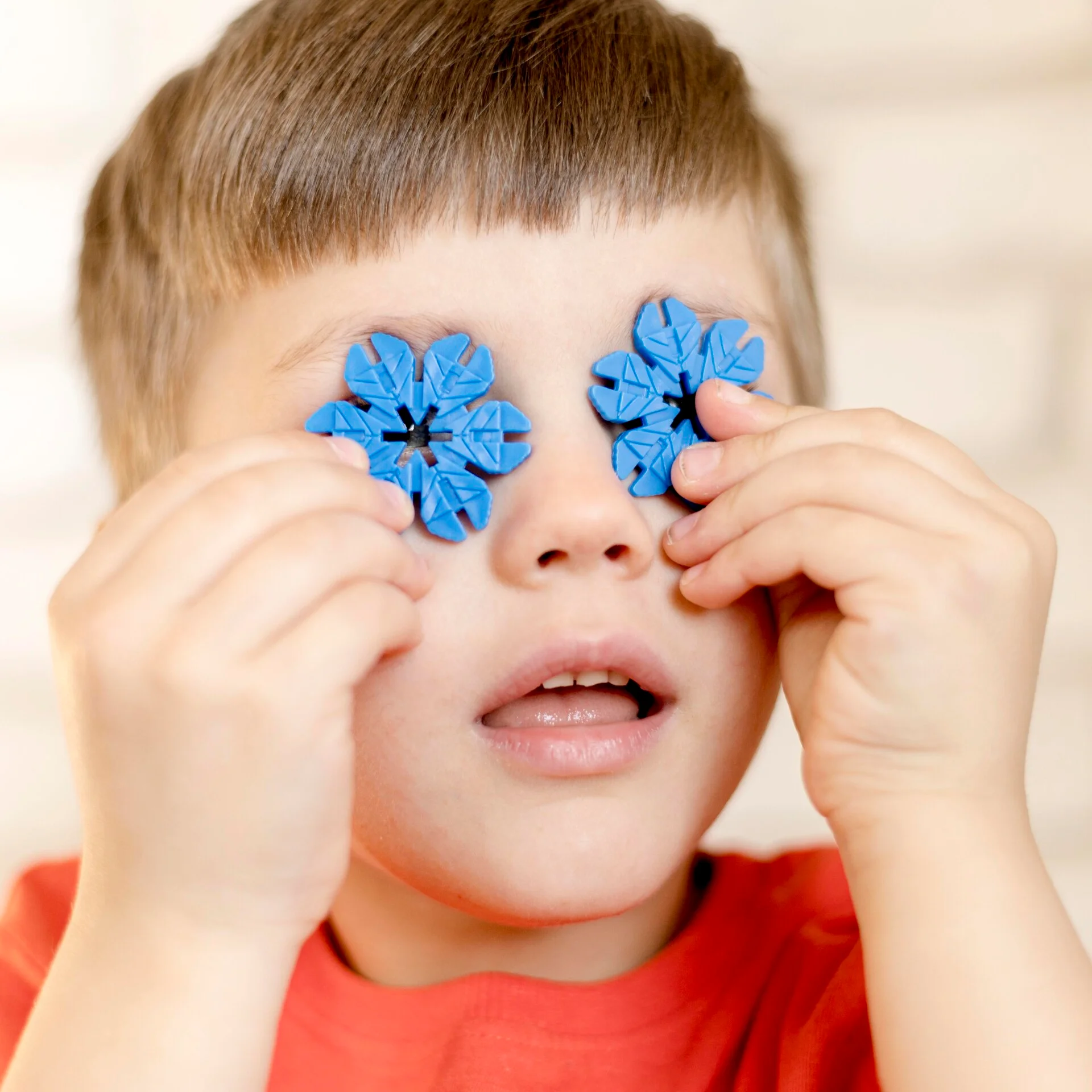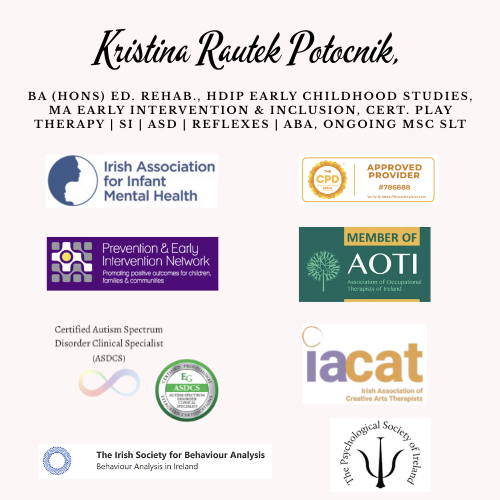Visual Perception: How Children Understand the World Around Them

Author: Kristina Rautek Potocnik, BA (Hons) Ed. Rehab., HDip Early Childhood Studies, MA Early Intervention & Inclusion, Cert. Play Therapy | SI | ASD | Reflexes, ongoing MSc SLT
Visual Perception: How Children Understand the World Around Them
Visual perception is the brain’s ability to understand and organise information received through the eyes. It is more than just seeing. It includes recognising shapes and faces, understanding size, colour, movement and space. Visual perception is important for daily tasks like reading, writing, playing, or moving safely through the environment.
In children, visual perception develops step by step from birth to adolescence. The early years are especially important because the brain is sensitive to new experiences. Toys, colours, movement, and contrast help young children strengthen their visual skills. These early interactions build the foundation for future learning.
Visual perception does not work alone. It is closely connected to other sensory systems. For example, when a child catches a ball, the brain combines information from sight, body awareness, and balance. This combination helps the child react and move properly. In therapy, it is important to look at how all sensory systems work together. Supporting the whole system helps improve visual-motor coordination and learning.
Some children have difficulties with visual perception. These may show up in different ways. A child might struggle to tell the difference between similar shapes, mix up letters like “b” and “d,” or have trouble copying from the board. They may also find it hard to find a toy in a messy room or understand directions like left and right. These challenges can affect confidence, learning, and social participation.
Therapy can help children develop visual perception through playful and structured activities. Common strategies include matching objects by shape or colour, remembering pictures, following patterns, copying shapes, or doing puzzles. Therapists may also combine visual tasks with movement, like balancing or jumping, to support the brain's ability to process and respond to visual information.
These activities are chosen based on the child’s age and specific needs. For example, some children need more support with eye-hand coordination, while others benefit from memory games or tasks that involve sorting and sequencing. The goal is always to help the child succeed in daily life by making tasks easier and more enjoyable.
Visual perception affects almost every part of a child’s day. It helps with recognising faces and emotions, understanding schoolwork, and playing safely. Identifying challenges early allows for the right kind of help to be given at the right time. Occupational therapy, together with support from speech therapists, psychologists, and special education professionals, provides a complete approach to helping children reach their full potential.
By supporting visual perception through fun, hands-on activities, parents and therapists can help children become more confident and independent in everyday life.
Latest Posts
- How children make sense of the world through their senses
- How your baby learns about the world through their senses
- Helping your child grow stronger through movement and play
- Understanding How Early Intervention Helps Children Learn, Move, and Connect
- How to Recognise Tactile Defensiveness and Help Your Child Feel Safe
- Understanding Feeding Challenges and How to Support Your Child at Home
- Let’s Talk Sitting: Exploring Floor Seating Options
- Retained Primitive Reflexes: The Hidden Cause Behind Developmental Struggles
- Where Curiosity Blossoms: How Children's Play Nurtures Growth for All
- Helping Your Child Through Stress: A Gentle Guide for Parents
- Sweet Little Lies – How to Recognise and Respond with Care
- Chores Are More Than Just Tasks – They’re a Tool for Growing Independence, Focus, and Confidence
- How to Help Children Develop Emotional Intelligence
- Blending Technology and Care: How VR Meta Quest Supports Children at NeuroNest
- A simple guide for parents who want to raise confident, happy children
- Setting Boundaries with Love: A Simple 3-Step Guide for Parents
- Understanding Behavior Through the Nervous System
- A Compassionate Lens on Dysregulation in Non-Speaking Autistic Individuals
- Supporting Development Through Movement: The Role of the Swing in Early Intervention
- Blending Tradition and Innovation: How NeuroNest Supports Your Child’s Unique Journey
- When Movement Meets Innovation: Supporting Child Development with GoBalance
- Why Visual Perception Matters for Everyday Life and Development
- Benefits of Chess in Early Intervention
- Building Healthy Nutrition from the Start
- A Journey Back to Your True Self
- Supporting Your Child’s Hand Skills for Confident Writing
- Blending the Best of Both Worlds
- Helping Toddlers Eat Well: A Parent’s Guide
- Why Tummy Time Matters for Your Baby's Development
- Helping Your Child Build Everyday Independence
- Who Are the Disconnected Kids?
- From First Tries to Automatic Habits: Understanding the Stages of Skill Learning
- Why a Child’s Level of Alertness Matters for Memory and Learning
- Early brain development starts before birth
- Why Slowing Down, Adapting Tasks, and Adding Breaks Helps Children Learn Better
- Why ADHD, Autism, Dyslexia and Other Challenges Need a New Approach
- The surprising power of copying in child development
- Books are more than just language tools—they’re powerful allies in sensory and motor development.
- Rethinking sensory support: moving beyond expensive rooms toward everyday understanding.
- Understanding how fear develops in a child’s brain
- Understanding how an early baby reflex can affect your child’s daily life
- A gentle start into baby development through movement and bonding
Our Partners



Our Memberships


